If you have any experience in the business world you have probably heard the term KPI. This stands for Key Performance Indicator and it is a type of important analytical piece that businesses can use to track their progress and see if they are meeting their goals.
In the world of ecommerce, KPIs are incredibly useful and can make sure that you are keeping your online store on track and maximizing its potential. If you want to take the next step and grow your business, I discuss ecommerce KPIs below and give examples of 7 important metrics to track.
Why Bother with KPIs for Ecommerce?
So, you’ve got a decent online store that gets a solid amount of traffic and sales. Wouldn’t you like to increase that? Wouldn’t you like things to run even smoother and to develop a large base of loyal customers who spend a lot? These are just some of the things you can achieve with ecommerce KPIs and they offer the following benefits:
- Keep track of spending
- Monitor profitability
- Gain important customer information
- Look at areas of improvement for your store
- Capitalize on great customer interactions
You don’t even have to create KPIs yourself or do the monitoring – an ecommerce SEO company could help with this so that you can concentrate on other areas of your business. Regardless, KPIs essentially allow you to make your ecommerce store more efficient and profitable.
Important Ecommerce KPIs to Track
There are dozens of KPIs for ecommerce but some are better than others and I have picked 7 top options below. Just bare in mind that some KPIs may not be relevant to your business depending on what you sell or how your online store works.
1. Conversion Rates
Conversion rates are often lauded as one of the top ecommerce KPIs and this is because it shows how effective your marketing, Google PPC ads, and landing pages are. Is your online store and marketing strategies actually working and turning visitors into customers?
Conversion rate is the percentage of site visitors who perform an action on your site. This could be making a purchase, signing up for your newsletter, or submitting a contact form, for example. If your conversion rates are low, you know you need to make changes to make your store more effective.
2. Net Profit
The end goal of most businesses is to make a profit. No one wants to simply pay the bills and break even – where is the fun in that? As a result, for any business including ecommerce, net profit remains one of the most important KPIs.
This essentially tells you if you are making any money! The net profit helps show the health of your ecommerce store but also allows you to plan for growth and to reinvest in your business. On the flip side, a poor net profit means you are only just scraping by and need to make changes to improve your standing.
3. Customer Acquisition Cost
CAC is basically how much it costs you to get a new customer. For example, maybe you spent $500 on marketing and sales last month and this bought in 52 new customers. We can determine that your CAC is $9.61 ($500 / $52).
Why does this matter? It’s a direct profit indicator as if your CAC is $9.61, but your average order value is $9.00 then it’s costing you more to get new customers than what they spend at your online store!
4. Average Order Value
AOV is how much each customer spends on average at your online store. This is just a great figure to know and you can pair it with other KPIs like CAC and COGS to better understand your profitability. AOV is simple to calculate – it’s your total revenue / total orders. For example, if you had $5,422 in revenue from 156 sales your AOV would be $34.75.
5. Shopping Cart Abandonment Rate
Have you ever visited an online store and added things to your cart only to change your mind and simply close the website? This is shopping cart abandonment and it is one of the main areas where ecommerce stores fall down. Around 70% of customers abandon their shopping carts in online stores so you could be missing out on huge profits here. This is why calculating the shopping cart abandonment rate and figuring out why this is happening is a valuable KPI.
6. Customer Lifetime Value
CLV is essential for determining the importance of things like customer retention and what loyalty contributes to your business. If you can calculate the approximate lifetime value of your customers you can see if it is more profitable to spend money on retaining existing customers or acquiring new customers compared with the AOC KPI.
7. Cost of Goods Sold
An ecommerce KPI that is often overlooked is COGS – cost of goods sold. This shows how much you are spending on producing your products from a pure manufacturing process (not including things like overheads and marketing).
The simplest formula for COGS is your beginning inventory value + sales – engine inventory value. With this KPI you can look at reducing your production costs to improve your margins.
Get Your KPIs in Order to Improve Your Online Store Performance
I get that it’s tempting to simply sit back and watch orders for your online store trickle in, but you could be doing so much more! With analysis of the above top ecommerce KPIs, you can turn that slow trickle into a floodgate of orders and grow your business indefinitely through continual improvement and development.










